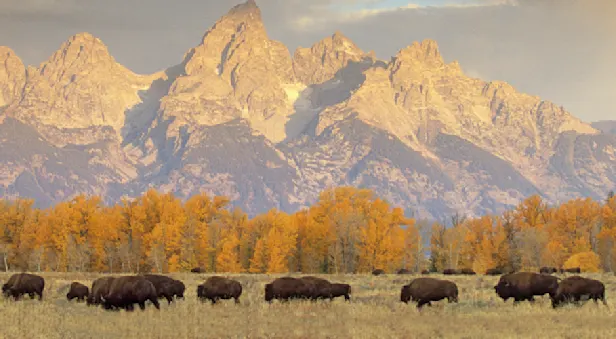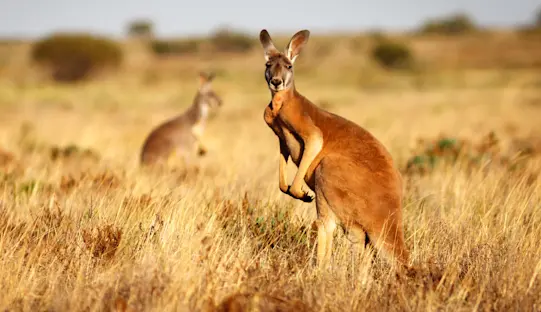
Know Before You Go


Golden Eagle Facts | Glacier & Waterton Wildlife Guide
GEOGRAPHIC LOCATION
Golden eagles (Aquila chrysaetos) are distributed throughout the Holarctic. They live in North America, Eurasia, and northern Africa. North American golden eagles are typically found in the west coast of the United States, from Alaska to Mexico, with a small scattering in the eastern United States and Canada.
HABITAT & HOME RANGE
Golden eagles range from sea level to elevations above 11,000 feet. They live in open and semi-open spaces, preferring grasslands, shrublands, wooded bushlands, coniferous forests and the icy tundra. The majority of golden eagles nest in mountainous regions, but can also be found in wetlands and estuaries.
The area of a golden eagle’s home range is based on the season and quality of its environment. During mating season, a golden eagles’ home range is anywhere between seven and thirteen square miles.
PHYSICAL DESCRIPTION
Golden eagles are the largest predatory birds in North America. They have an expansive wingspan and are powerfully built, which allows them to gracefully soar at astounding speeds. This magnificent animal has a noble history with human civilizations. In Greek mythology, the “Aetos Dios”, the Eagle of Zeus, served as a personal messenger and animal companion to the mighty king of the gods. In medieval Europe, use of the so-called “royal eagle” for falconry was the reserved right of kings. This regal creature has a golden-brown crown, with head and neck plumage lighter than its dark brown body. Their head and beak have a flattened profile compared to other birds of prey, and their tails are a mottled gray-brown.
Golden eagles have dark brown eyes, and their sharp, black bills have a yellow cere. Their legs are feathered down to their yellow feet, which hold curved, black talons. From underneath, the huge flight feathers of the wings have hues of white and brown. The head, body, and smaller, forefront wing feathers are dark in color.
Golden eagles are 27 to 35 inches long and have a massive wingspan of six to over seven feet. Females are much larger than males, weighing between 8.6 and 13.5 pounds, while males only weigh 6.6 to 12 pounds.
Young golden eagles have white patches on their wings, a large band of white on their tails and a black band at their base. This tail feathering is sometimes called “ringtail” plumage, due to the nature of the bands. At four to six years old, juveniles will gain adult plumage.
FEEDING HABITS
Golden eagles prey upon small mammals, including ground squirrels, marmots, and rabbits. Their diet also includes fish, birds, reptiles, insects, and carrion. They have been known to attack larger animals, such as deer, sheep, coyotes, foxes, badgers, and even small bear cubs. Eagles will frequently hunt in pairs, one running an animal down to exhaustion, and the other diving for the fatal attack. Golden eagles usually consume their prey fresh, rather than caching it for later retrieval.
BEHAVIOR
While some golden eagle populations migrate, others remain in the same area. The majority of breeding pairs in southern Canada and the contiguous United States are sedentary year-round. However, golden eagles in Canada and Alaska will often fly south in the fall, when food becomes less abundant in northern territories.
Golden eagles are typically found by themselves or in pairs, with the exception of non-breeding juveniles who may live in groups. Wintering adults may gather together during severe weather or an abundant food supply.
Golden eagles are swift and strong, able to carry up to eight pounds while in flight, and fly at a speed of up to 80 miles-per-hour. They can even reach a speed of 200 miles-per-hour while diving, but they generally soar at speeds of 28 to 32 miles-per-hour. While flying, golden eagles have their wings lifted horizontal to their body, as opposed to at an angle, as vultures and hawks do. They alternate between slowly beating their wings, and gliding through the sky.
Golden eagles are generally silent birds, except during mating season. At this time, they are quite vocal, communicating through nine different calls, which mostly relate to feeding their young.
REPRODUCTION
The golden eagle is monogamous, pairing with another eagle for several years, particularly in sedentary populations. Migrating eagles will often return to their mating grounds to court and pair between February and mid-April. It is unclear whether these pairings last throughout the year. Courtship consists of chasing, diving, undulating flight, soaring and circling together, showcasing claws, and simulating mock attacks.
Golden eagles breed once a year, between March and August, depending on their distribution. Many breeding pairs are sedentary, staying in the same area year-round. Bonded pairs may start courting and building their nests as early as December. The pair might have a number of nests in their territory, which they frequently refurbish and reuse each year. Nest building or refurbishing may take the pair between four and six weeks to complete. These nests, called eyries, are built on cliffs, in tall trees, along riverbanks, and in high human-made structures. The foundation is made up of sticks and vegetation, and is lined with softer plants, which include tree lichen, moss, grass, aromatic leaves, inner soft bark, evergreens, and shredded yucca fiber. The largest recorded eyrie was 20 feet tall and 8.5 feet wide.
Eggs range in color from drab white to blotchy brown to mottled reddish-brown. Eagles typically lay two eggs, though the number ranges from one to four. Each egg is laid at an interval of three to four days. The mother is the primary incubator, though the father will usually take part. This incubation period lasts 35 to 45 days, and the chicks will hatch a few days apart. The eaglets are altricial, meaning they are relatively immobile and need time to develop in the nest. Older nestlings tend to be much larger than their younger, weaker siblings, and the stronger chicks often commit siblicide.
The mother broods her nestlings for about 45 days. Both the male and female deliver food to the chicks, which hop, walk, or fall out of the nest between 45 and 81 days old. The eaglets start flying at approximately ten weeks of age and become fully independent 32 to 80 days after fledging. Once they attain adult plumage, between the ages of four and seven, the eagles will begin mating.
Golden eagles live up to 32 years in the wild; in captivity, an eagle has reached the age of 46.
PREDATION
There are few that prey upon the golden eagle. Only wolverines and brown bears have been known to snatch nestlings.
CONSERVATION STATUS
The golden eagles’ greatest threat to survival is humans. The Bald and Golden Eagle Protection Act of 1962 gave these birds federally protected status, but prior to that, ranchers were wary of the large bird, fearing for the loss of their livestock. Because of this worry, about 20,000 golden eagles were killed, typically by aircraft. However, this worry was unfounded. Up to 75 percent of a golden eagle’s diet consists of rabbits, and studies have shown little to no evidence of a significant threat to ranchers’ sheep and goats.
Now, golden eagle populations are beginning to stabilize, though some areas have populations that are still in decline. Maine, New York, and New Hampshire list the bird as endangered, and Montana and Washington recognize the animal as a species of concern. Eagles continue to face threats from the result of human activities, including electrocution by power lines, habitat destruction, loss of prey, and disturbance from recreational activities, as well as trapping and poisoning (frequently directed at other animals). Where disturbance is frequent, migration is affected, breeding often fails, and eagles will likely abandon their nests, leaving incubated young to perish.
See North America's National Parks on These Trips

Glacier & Waterton: An International Treasure
Sheer-walled peaks, icy lakes, alpine valleys, summer wildflowers and magnificent wildlife! Discover all the wonders on both sides of the border with naturalist guides who know this land intimately.


Ultimate Yellowstone & Grand Teton Safari
A small-group exploration of Yellowstone and the Tetons as few get to experience these iconic parks—scout for wildlife and discover secret places with our naturalist guides who know this region intimately.































